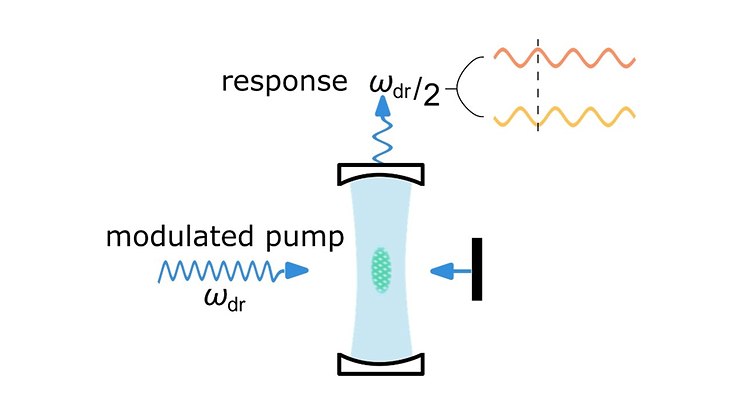Quantum Physics
Superradiant Calcium laser
3 September 2019

Photo: AG Hemmerich
Single atoms prepared in an excited state randomly return to the ground state with a probability approaching unity with exponential time dependence. However, if many atoms are excited, the decay characteristic dramatically changes. The first spontaneously emitted photon triggers adjacent atoms to emit in phase, such that a classical coherent light pulse emerges on a time-scale much shorter than the excited state lifetime, a phenomenon termed superradiance. The time, when such a pulse attains maximal intensity, fluctuates from shot to shot, as it is determined by the time when the first spontaneous photon emerges. Hence, the stochastic nature of spontaneous emission becomes directly visible in the arrival time statistics of intense classical light pulses. We have studied this arrival time statistics in the superradiant emission of calcium atoms and found excellent quantitative agreement with an analytical model. Our work may be extended to build a superradiant calcium laser operating in a continuous mode with a spectral purity beyond what is presently possible with state of the art conventional lasers. Superradiant lasers could be useful for reading out atomic clocks with unprecedented precision.
Pulse Delay Time Statistics in a Superradiant Laser with Calcium Atoms
Torben Laske, Hannes Winter, and Andreas Hemmerich


